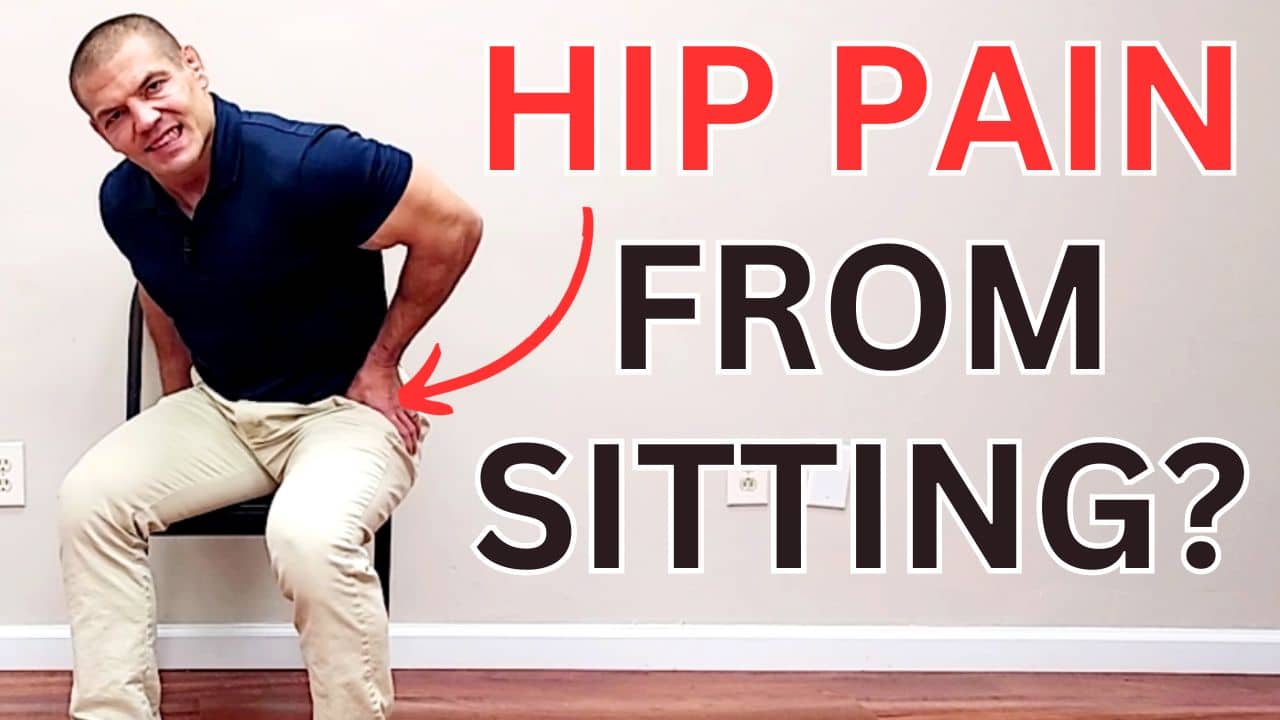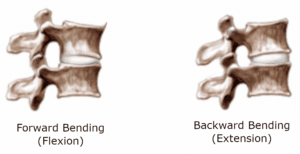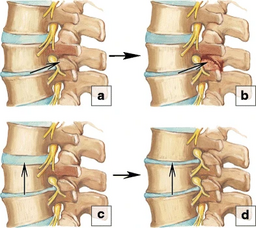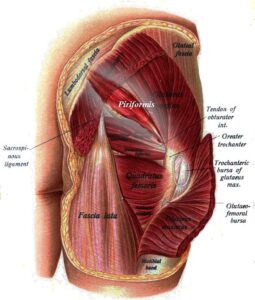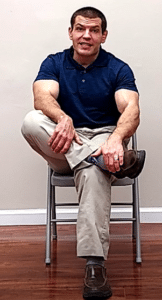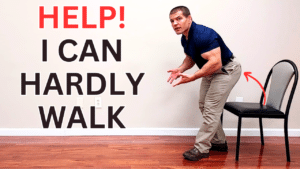Do You Get Hip Pain When Sitting Too Long?
Watch this video to learn 3 kinds of hip pain when sitting too long. Plus, learn what to do so that you can sit longer with less hip pain and stiffness when you go to stand back up.
What Causes Hip Pain When Sitting Too Long?
There are many different things that can cause hip pain when sitting too long.
In fact "hip pain" means different things to different people.
Common places people get hip pain when sitting too long include:
- On the side of the hip
- In the groin
- In the back of the hip/ buttock
Back Of Hip Pain When Sitting
The first type of hip pain is felt in the back of the hip or the buttock.
Interestingly, this type of pain is usually not caused by a hip problem itself.
The most common cause of pain in the back of the hip when sitting comes from your lower back.
Traditionally, people thought that back pain or buttock pain when sitting for long periods resulted from a slouched seated posture due to herniated discs.
While that's true in some cases, especially for younger individuals with back injuries, for those over the age of 40 or 50, degenerative discs in the lower back are a more common cause of back pain when sitting.
Sitting upright without back support with "good posture" arches your lower back narrows the spaces between your lower back joints.
This can lead to pain in the back of your hip when sitting for too long.
Additionally, sitting up tall without back support can put pressure on the nerves to your legs, causing more discomfort.
When you sit up tall without back support, you engage your hip flexor muscles to help hold you up.
This in turn can create more compression on your spine. That results in pain in the back of your hip or buttock.
How to sit longer with less pain in the back of the hip
To sit longer without hip pain, make sure to use the backrest on your chair.
Make sure your lower back is pressed flat into the backrest.
Consider using a small step stool or foot rest to elevate your feet slightly.
This helps raise your knees higher than the level of your hips.
Buy sitting with your knees higher than your hips, it helps to flatten your lower back.
That in turn open up the spaces between joints and nerves, which can help with back of hip pain when sitting.
Keep equal pressure on each hip when sitting
Additionally, it helps to keep equal pressure on each side of your hip when sitting. This makes sure that you're not putting too much pressure on your SITS bones and causing buttock pain.
Additionally, doing this makes sure your lower back is symmetrically aligned so that you're not pinching nerves in your lower back.
Stretch your hip rotator muscles
Doing a figure-4 stretch or piriformis stretch helps to stretch the muscles in the back of your hip.
To do this stretch, simply cross one ankle over the opposite knee.
Allow the knee to fall down comfortably as shown below.
Hold this stretch for about 1 minute.
Need more help for back & buttock pain when sitting?
To learn more about how to relieve back and buttock pain when sitting, read our Ultimate Guide To Relieve Lower Back Pain When Sitting.
Side of Hip Pain When Sitting Too Long
Pain on the outside of the hip can be caused by irritation of the muscles, bursa, tendons, or IT band that run over your hip bone.
Pain in the groin is often caused from a problem closer to the hip joint - arthritis, a hip flexor strain, or less commonly, a labrum tear.
That being said, it's not as important which of those structures is the cause of your pain as much as what you can do to stop it.
How to prevent outer hip pain when sitting:
- Avoid crossing your legs when sitting.
- Avoid sitting with your knees narrower than your hips.
- The best option is to sit squarely with both feet flat and hips, knees, and ankles all the same width.
- If you MUST cross your legs when sitting, cross at the ankles rather than the hips.
Hopefully these tips will help you avoid pain on the outside of the hip when sitting. For more tips like these, you can download a FREE copy of our Hip Pain Guide below:
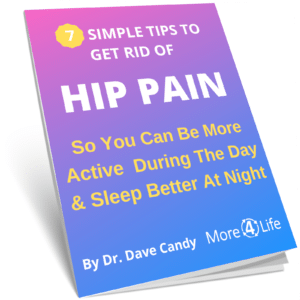
Front Of Pain When Sitting Too Long
Groin pain when sitting happens when you either pinch your thigh bone against the pelvis.
That may be due to:
The space inside your hip joint is narrowed when you have too much hip flexion, adduction, or internal rotation.
Therefore, preventing these positions when sitting can help you sit more comfortably.
How to prevent front of hip pain when sitting.
- As mentioned above, don't cross your legs or sit with your knees closer together than your feet.
- Don't sit too upright. This causes your pelvis to tilt forward and can cause pinching in the groin. It also causes your hip flexor muscles to be on constant tension. Reclining back in your chair and slouching slightly can actually relieve pain in this case.
- To solve this, sit all the way back in your chair, allowing your low back to relax into the chair back.
- If you continue have groin pain when sitting after sitting back, raising your chair height can help, especially if you're a taller person.
What If I Have Hip Pain When Standing Up After Sitting?
It's common for people to get hip stiffness when sitting of a long time and then have difficulty getting back up afterwards.
Often it can also be difficult taking the first few steps after standing up from sitting.
Learn how to stand and walk after sitting for awhile in this post.
Like this post? See our other posts on hip pain
Such as:
Prevent hip pain when sleeping at night
Can't lift leg to get in the car?

